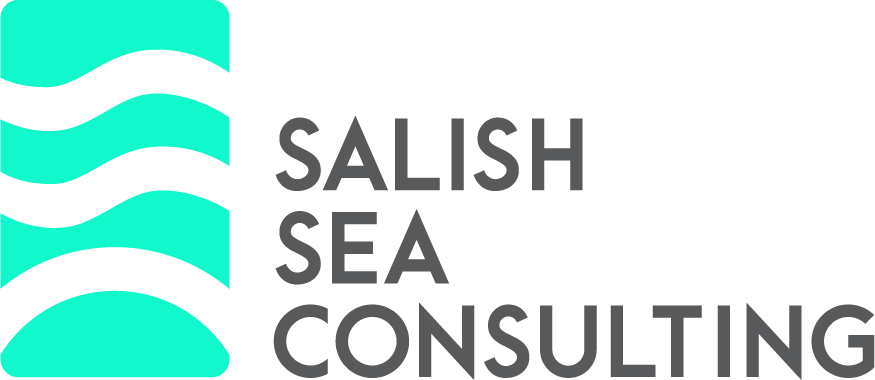Semantic Keywords vs LSI Keywords

What Actually Works for SEO in 2025
Google's John Mueller said it best: "There's no such thing as LSI keywords."
This statement should have ended the LSI keyword debate. Yet SEO tools and guides still promote these outdated strategies in 2025.
You're wasting time on techniques that don't work. Worse, you might be hurting your rankings.
Here's what actually drives results: semantic keywords and entity-based SEO.
Why LSI Keywords Don't Work
LSI stands for Latent Semantic Indexing. Bell Labs created this technology in the 1980s for static document databases.
Google doesn't use LSI. Here's why:
- Outdated technology - Built for static documents, not the dynamic web
- No real-time capability - Can't handle Google's billions of daily searches
- Limited context understanding - Misses user intent and entity relationships
- Officially debunked - Google representatives repeatedly deny using LSI
John Mueller's 2019 statement wasn't casual. Google's Senior Webmaster Trends Analyst was correcting years of SEO misinformation.
What Google actually uses:
- Natural language processing models
- Entity recognition systems
- Machine learning algorithms
- Real-time context analysis
These systems make 1980s LSI look primitive.
How Search Engines Really Work in 2025
Modern search engines identify entities, not just keywords.
When you search "Apple stock price," Google knows you mean Apple Inc., not fruit prices. No additional context needed.
The process:
- Text analysis - NLP models identify named entities
- Context evaluation - Surrounding words provide clarity
- Knowledge Graph matching - Entities connect to Google's database
- Relationship mapping - Entity connections influence rankings
This explains why comprehensive content beats keyword-stuffed pages. Search engines reward deep topic understanding.
Entity Recognition Example
Search: "best coffee brewing methods"
Traditional keyword approach: Target variations like "coffee brewing techniques," "coffee making methods," "brewing coffee tips"
Modern entity approach: Cover equipment entities (French press, pour-over, espresso machines), process entities (grind size, water temperature), and outcome entities (flavor profiles, caffeine content)
The entity approach builds topical authority. Google recognizes your site as a comprehensive coffee resource.
What Are Semantic Keywords?
Semantic keywords focus on entity relationships and user intent.
LSI keywords (outdated):
- Based on mathematical co-occurrence
- Focus on keyword variations
- Ignore user intent
- Often lead to keyword stuffing
Semantic keywords (modern):
- Based on entity relationships
- Focus on comprehensive coverage
- Consider user intent
- Build topical authority
Real example:
Instead of targeting "digital marketing," "online marketing," "internet marketing" as variations, create content covering digital marketing entities: SEO, PPC, social media, email marketing, content marketing.
Show how these entities connect. Explain when to use each strategy. Demonstrate expertise across the topic area.
AI Search Changes Everything
ChatGPT Search launched in late 2024. It already captures 1% of the search market.
Perplexity has over 15 million users. Google AI Overviews appear in 18.76% of US searches.
These systems change how you should optimize content.
What AI Search Engines Want
Authority signals:
- Author credentials and bylines
- Recent publication dates
- Proper source attribution
- Factual accuracy with supporting data
- Comprehensive topic coverage
Content structure:
- Clear information hierarchy
- Scannable headers outlining key points
- Data in tables and structured formats
- Key facts in callout boxes
- Logical flow from general to specific
Citation-worthy content: AI systems cite content that provides verifiable, well-researched information. They favor sources that demonstrate clear expertise.
Conversational Query Optimization
AI excels at natural language queries:
- "How do I optimize my website for semantic search?"
- "What's the difference between semantic keywords and LSI keywords?"
- "Can you explain entity-based SEO for e-commerce sites?"
Structure your content to answer these conversational questions directly. Use FAQ sections. Anticipate follow-up questions.
Practical Semantic Keyword Research
Free Methods That Work
Google's People Also Ask expansion:
- Search your primary topic
- Expand each "People Also Ask" question
- Note related entities mentioned
- Map question patterns
- Identify content gaps
Related searches analysis: Look for entity patterns in related searches. Group semantically connected queries. Find different intent types within your topic.
Knowledge Graph extraction: Search your topic. Analyze the knowledge panel. Note entity attributes and relationships. Plan content that demonstrates entity expertise.
AI-Powered Research
ChatGPT for entity mapping: Prompt: "Generate a comprehensive entity map for [your topic]"
This reveals related concepts, subtopics, and entity relationships you might miss.
Competitor analysis:
- Identify top 10 ranking pages
- Extract entities mentioned across competing content
- Find entity gaps in your content
- Plan comprehensive coverage
Research Tools Worth Using
Free options:
- Google Cloud Natural Language API
- Answer The Public
- Google Trends for entity popularity
Premium tools:
- MarketMuse for topic modeling
- Clearscope for content optimization
- Surfer SEO for semantic analysis
Building Topic Clusters
Topic clusters build topical authority through connected content networks.
The Hub and Spoke Model
Pillar page: Comprehensive overview covering broad entity relationships. Links to detailed cluster content. Targets primary semantic keywords.
Cluster content: Deep-dive pages for specific entities. Detailed guides for particular use cases. Comparison content helping users decide.
Supporting content: FAQ pages for voice search. Glossary pages defining entities. Tool pages providing practical value.
Real Implementation Example
Topic: Home coffee brewing
Pillar page: "Complete Guide to Coffee Brewing Methods at Home"
Cluster pages:
- "V60 vs Chemex: Pour-Over Coffee Maker Comparison"
- "Perfect Espresso: Equipment, Ratios, and Technique"
- "French Press Mastery: Timing and Temperature Guide"
- "Cold Brew Coffee: Equipment and Flavor Optimization"
Supporting content:
- Coffee brewing glossary
- Grind size calculator
- Troubleshooting guide
Each page covers specific entities while linking back to the pillar. This builds comprehensive topical coverage.
Internal Linking Strategy
Connect related entities throughout your content. Link from general topics to specific implementations. Show entity relationships through your linking patterns.
Example linking: From your pillar page about coffee brewing, link to specific brewing methods. From equipment reviews, link to technique guides. From troubleshooting pages, link back to fundamental concepts.
This linking pattern signals topical expertise to search engines.
Technical Implementation
Schema Markup for Entities
Use structured data to clarify entity relationships:
Article schema with semantic properties FAQ schema for conversational queries
How-to schema for process content Product schema with entity connections
Example: Coffee brewing guide uses How-to schema with equipment entities, ingredient entities, and process steps clearly marked.
Content Structure
Headers that outline entities: Use H2 and H3 tags to organize entity information logically.
Tables for entity comparison: Equipment specifications, brewing ratios, timing charts.
Lists for entity attributes: Equipment features, technique steps, troubleshooting points.
Page Speed and AI Access
AI systems favor fast-loading, accessible content:
- Compress images without quality loss
- Remove unused JavaScript
- Use clean HTML structure
- Enable easy text parsing
Measuring Semantic SEO Success
Traditional Metrics
Traffic growth by entity: Track rankings for entity-specific terms, not just primary keywords.
Topic visibility: Monitor how many related queries your content ranks for.
Click-through rates: Semantic content often gets higher CTR due to better user intent matching.
AI Search Metrics
AI Overview citations: Track how often your content appears in Google AI Overviews.
ChatGPT visibility: Monitor mentions in ChatGPT Search results.
Voice search results: Track featured snippet appearances and voice search traffic.
Authority Indicators
Backlink quality: Entity-focused content attracts more relevant, high-quality links.
Social sharing: Comprehensive entity coverage gets shared more often.
User engagement: Time on page, bounce rate, and pages per session improve with semantic optimization.
Common Semantic SEO Mistakes
Keyword Stuffing 2.0
Don't stuff entity names throughout your content. Natural usage works better than forced repetition.
Shallow Entity Coverage
Mentioning entities isn't enough. Explain their attributes, relationships, and contexts.
Ignoring User Intent
Each entity query has different intent types. Address informational, commercial, and transactional needs.
Poor Content Organization
Random entity mentions confuse readers and search engines. Organize entities logically with clear relationships.
Tools for Semantic Analysis
Content Analysis
MarketMuse: Analyzes entity coverage and suggests improvements. Compares your content to top competitors.
Clearscope: Provides semantic keyword suggestions based on top-ranking content analysis.
Surfer SEO: Offers entity extraction and semantic optimization recommendations.
Research Tools
Google Cloud Natural Language: Extracts entities from text and shows relationship strengths.
IBM Watson Natural Language Understanding: Analyzes entity sentiment and relevance scores.
Answer The Public: Reveals question patterns around your entities.
The Future of Semantic SEO
Multimodal Content
Search engines increasingly process images, videos, and audio. Optimize all content types with entity information.
Image optimization: Use descriptive alt text mentioning relevant entities. Add captions explaining entity relationships.
Video optimization: Include entity information in titles, descriptions, and transcripts. Use chapter markers for entity sections.
Voice and Conversational Search
Optimize for natural language patterns. Structure content to answer follow-up questions. Create conversation-friendly content formats.
AI Integration
As AI search grows, focus on creating citation-worthy content. Build authority through comprehensive entity coverage. Maintain accuracy and recency.
Action Steps for Implementation
Week 1: Audit Current Content
- List primary entities in your niche
- Analyze current content for entity coverage
- Identify major entity gaps
- Plan content to fill gaps
Month 1: Research and Plan
- Map entity relationships in your topic
- Analyze competitor entity strategies
- Create topic cluster architecture
- Develop content calendar around entities
Quarter 1: Build Authority
- Publish pillar content with broad entity coverage
- Create cluster content for specific entities
- Build internal linking between related entities
- Monitor entity ranking improvements
Ongoing: Optimize and Expand
- Track entity-specific performance metrics
- Update content based on algorithm changes
- Expand entity coverage as you find gaps
- Build relationships with other entity authorities
Key Takeaways
LSI keywords are outdated technology. Google confirmed this repeatedly.
Semantic keywords focus on entities and user intent. This approach builds real topical authority.
AI search engines reward comprehensive, well-researched content that demonstrates entity expertise.
Topic clusters organize entity information effectively. They signal topical authority to search engines.
Start with entity mapping. Understand your topic's entity landscape before creating content.
Focus on user intent. Each entity query serves different user needs.
Measure success through entity-specific metrics, not just keyword rankings.
The future belongs to entity-based SEO strategies that serve both human users and AI systems effectively.




